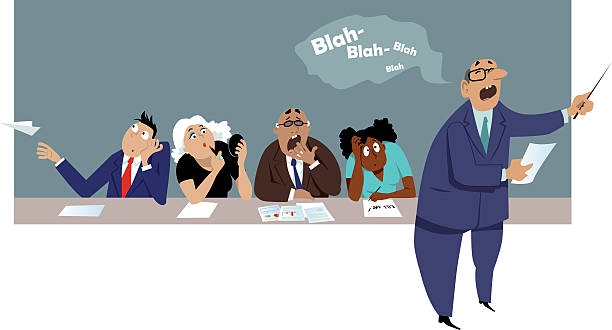Speaking in front of an audience can provoke feelings of anxiety and nervousness for even the most seasoned presenters. However, public speaking is a crucial skill that can open doors to numerous opportunities for personal growth, career advancement, and overall success. In this comprehensive guide, we’ll delve into proven strategies and techniques to help you become a confident, captivating, and engaging public speaker, capable of leaving a lasting impact on your audience.
Overcoming Fear and Anxiety
One of the biggest hurdles many people face when it comes to public speaking is the fear and anxiety that often accompanies it. It’s important to understand the root causes of this anxiety, which can stem from factors such as low self-confidence, negative past experiences, or a fear of being judged or criticized.

Identifying the Root Causes
Public speaking anxiety can manifest in various ways, including physical symptoms like sweating, rapid heartbeat, or shaky hands, as well as psychological effects like racing thoughts or feelings of dread. To address this anxiety effectively, it’s crucial to identify the underlying factors contributing to your fear.
Some common root causes of public speaking anxiety include:
- Perfectionism: The desire to deliver a flawless performance can lead to excessive self-criticism and fear of failure.
- Lack of Experience: Limited exposure to public speaking situations can heighten anxiety due to the unfamiliarity of the experience.
- Negative Self-Talk: Engaging in negative self-talk, such as doubting your abilities or anticipating failure, can reinforce feelings of anxiety.
- Past Traumatic Experiences: Previous embarrassing or traumatic experiences related to public speaking can create lasting negative associations.
Once you’ve identified the root causes of your anxiety, you can begin to address them using targeted strategies and techniques.
Techniques for Managing Nervousness
To overcome fear and anxiety, consider the following proven techniques:
Breathing Exercises
Deep breathing exercises can help calm your mind and body before a presentation. Try inhaling slowly through your nose, holding your breath for a few seconds, and then exhaling slowly through your mouth. Repeat this process several times until you feel more relaxed. This simple exercise can help regulate your heart rate and ease feelings of panic or anxiety.
Visualization
Visualization is a powerful tool for building confidence and reducing anxiety. Close your eyes and imagine yourself delivering a successful and confident presentation. Visualize yourself standing tall, speaking clearly, and engaging with the audience. Picture the audience listening attentively and responding positively to your message. This mental rehearsal can help reprogram your mind and create a positive association with public speaking.
Positive Self-Talk
Replace negative thoughts with positive affirmations. Remind yourself of your preparation, knowledge, and ability to connect with the audience. Repeat encouraging phrases like “I am confident and prepared” or “I have valuable insights to share.” Positive self-talk can help counteract negative thought patterns and boost your self-assurance.
Gradual Exposure
If your anxiety stems from a lack of experience, consider gradually exposing yourself to public speaking situations. Start by practicing in front of a small, supportive group, such as friends or family members. As you gain more experience and confidence, gradually increase the size of your audience or the complexity of your presentations.
Seeking Professional Support
In some cases, public speaking anxiety may be rooted in deeper psychological issues or past traumas. If your anxiety is persistent and debilitating, consider seeking the guidance of a mental health professional or a specialized public speaking coach. They can provide personalized strategies and techniques to help you overcome your fears and develop a healthy mindset towards public speaking.
Crafting a Compelling Message
To captivate your audience, you must craft a compelling message that resonates with them. Start by identifying your purpose and central message. What is the key takeaway you want your audience to remember? Once you have a clear focus, conduct thorough research to gather relevant information, facts, and supporting evidence.

Structuring Your Speech
When structuring your speech, follow a logical flow that consists of:
- Introduction: Capture your audience’s attention with an interesting anecdote, statistic, or thought-provoking question. This opening should pique their curiosity and set the stage for the main content of your presentation.Example Introduction: “Did you know that public speaking is consistently ranked as one of the top fears among adults, even outranking the fear of death? Yet, effective communication skills are essential for personal and professional success. Today, we’ll explore how to conquer this fear and become a confident, engaging public speaker.”
- Body: Present your main points, supporting them with examples, stories, and data. Organize your content in a logical and easy-to-follow manner, using transitions to guide your audience smoothly from one point to the next.Example Body Point: “One of the keys to effective public speaking is understanding your audience. By tailoring your message and delivery style to resonate with their specific backgrounds, interests, and needs, you can create a more meaningful and impactful connection. For instance, when presenting to a group of business professionals, you might use industry-specific terminology and incorporate real-world case studies to illustrate your points. However, when speaking to a more general audience, you would need to adjust your language and examples to be more accessible and relatable.”
- Conclusion: Summarize your key messages and leave your audience with a memorable call to action or inspiring quote. Your conclusion should reinforce the central theme of your speech and provide a strong, lasting impression.Example Conclusion: “In conclusion, public speaking is a skill that can be developed and mastered with practice and dedication. By embracing the strategies we’ve discussed today, you can overcome your fears, connect with your audience, and become a powerful, persuasive communicator. As the famous orator Cicero once said, ‘The eloquent are the only persons who can truly be called free, for they govern their audiences and have influence over the minds of others.’ So, step out of your comfort zone, find your voice, and let your message be heard.”
Incorporating storytelling and personal anecdotes can be a powerful way to connect with your audience on an emotional level. Share relatable experiences that illustrate your points and help your message resonate.
Conducting Effective Research
To craft a compelling message, you must have a solid foundation of knowledge and understanding of your topic. Conduct thorough research to gather relevant information, facts, and supporting evidence from credible sources.
Here are some tips for effective research:
- Start with reputable online resources, such as academic journals, industry publications, or trusted news sources.
- Consult subject matter experts, professionals, or experienced individuals in the field you’re researching.
- Visit libraries or archives to access books, articles, and historical documents related to your topic.
- Conduct interviews or surveys to gather first-hand insights and perspectives.
- Stay up-to-date on the latest developments, trends, or advancements in your area of focus.
As you gather information, organize your research materials in a logical manner, such as using note-taking apps, creating digital folders, or maintaining a physical research binder. This will help you easily reference and incorporate relevant details into your speech.
Mastering Your Delivery
Your delivery plays a crucial role in captivating your audience and ensuring your message is received effectively. Develop a strong, confident voice and body language that exudes authority and credibility.

Vocal Delivery
Effective use of pauses, emphasis, and vocal variety can add depth and impact to your speech. Pausing strategically can build anticipation and emphasize key points, while varying your tone and volume can keep your audience engaged and prevent monotony.
Here are some vocal techniques to practice:
- Pausing: Use intentional pauses to allow your audience to absorb important information or to create dramatic effect.
- Emphasis: Stress specific words or phrases by adjusting your volume, tone, or pace to highlight their significance.
- Vocal Variety: Vary your pitch, tone, and volume to add emotion and interest to your delivery. Monotone speaking can quickly lose your audience’s attention.
- Enunciation: Speak clearly and enunciate your words carefully to ensure your message is understood.
- Pace: Adjust your speaking rate to match the intensity or complexity of the content you’re delivering. Slower pacing can add weight and importance, while a faster pace can build excitement or urgency.
Remember, your vocal delivery should feel natural and authentic. Avoid exaggerated or affected tones that may come across as insincere or distracting.
Body Language and Presence
Your body language and physical presence on stage can significantly impact how your message is received. Adopt an open, confident stance with good posture, and make eye contact with different sections of the audience to establish a connection.
Here are some tips for effective body language:
- Gestures: Use purposeful hand gestures to emphasize key points or add visual interest to your delivery. Avoid fidgeting or nervous movements that can be distracting to your audience.
- Facial Expressions: Your facial expressions should reflect the tone and emotion of your message. Smile when appropriate, and use expressive eyes and eyebrows to convey enthusiasm or emphasize important points.
- Movement: Avoid standing in one spot for too long. Purposeful movement around the stage or presentation area can add energy and dynamism to your delivery. However, be mindful not to pace excessively or make movements that may distract from your message.
- Eye Contact: Maintain eye contact with different sections of the audience throughout your presentation. This helps establish a personal connection and engage your listeners. However, be mindful not to fixate on any one individual for too long, as this can make them feel uncomfortable.
- Confident Stance: Stand with your feet shoulder-width apart, your shoulders back, and your head held high. This open, confident stance projects authority and helps you command the space.
Practicing in front of a mirror or recording yourself can be helpful in identifying and improving any distracting mannerisms or habits that may detract from your delivery.
Visual Aids and Multimedia
Visual aids and multimedia elements, such as slides, videos, or props, can enhance your presentation and reinforce your message when used effectively. However, it’s crucial to use them judiciously and ensure they complement your content rather than distract from it.
When incorporating visual aids, follow these guidelines:
- Simplicity: Avoid cluttered or overly complex slides. Use clear, concise text and simple graphics or images that reinforce your key points.
- Consistency: Maintain a consistent design theme throughout your visual aids, using complementary colors, fonts, and layouts.
- Enhancing, Not Replacing: Visual aids should enhance your message, not replace it. Avoid relying too heavily on your slides to convey information.
- Multimedia Integration: If using videos, animations, or other multimedia elements, ensure they are seamlessly integrated and function properly during your presentation.
- Audience Engagement: Use visual aids to engage your audience by posing thought-provoking questions, displaying interactive elements, or incorporating audience feedback opportunities.
Remember, your visual aids should be a supporting tool, not the main focus of your presentation. Use them strategically to emphasize key points, illustrate concepts, or provide visual reinforcement of your message.
Audience Interaction
Engage your audience by incorporating questions, encouraging participation, or inviting them to share their thoughts and experiences. This interactive approach can create a more dynamic and memorable experience for everyone involved.
Here are some strategies for effective audience interaction:
- Rhetorical Questions: Ask rhetorical questions that encourage your audience to reflect on your message or consider alternative perspectives.
- Soliciting Responses: Pose open-ended questions and invite audience members to share their thoughts or experiences. This can foster a more engaging dialogue.
- Polls or Surveys: Utilize interactive tools like online polls or surveys to gather real-time feedback from your audience and incorporate their responses into your presentation.
- Demonstrations or Activities: Involve your audience in hands-on demonstrations, role-playing scenarios, or group activities to reinforce key concepts and promote active learning.
- Q&A Sessions: Reserve time for a question-and-answer session, allowing your audience to ask clarifying questions or share their perspectives.
When engaging with your audience, be prepared to manage different types of responses or reactions. Remain respectful, open-minded, and adaptable, as audience interaction can sometimes lead to unexpected directions or challenges.
Preparing and Practicing
Preparation and practice are essential for delivering a successful presentation. Develop strategies for memorizing and internalizing your content, such as breaking it down into smaller chunks or creating mental associations.

Memorization Techniques
While it’s generally advisable to avoid memorizing your entire speech verbatim, committing key points, transitions, and important statistics or quotes to memory can enhance your delivery and confidence.
Here are some effective memorization techniques:
- Chunking: Break down your content into smaller, manageable chunks or sections. Memorize each chunk thoroughly before moving on to the next.
- Mnemonic Devices: Create acronyms, rhymes, or visual associations to help you remember key points or sequences.
- Repetition: Repeat your content out loud, either in its entirety or in smaller sections, until it becomes ingrained in your memory.
- Visualization: Associate specific points or ideas with vivid mental images or visual cues to aid recall.
- Practice Retrieval: Test yourself by attempting to recall and articulate your content without referring to your notes or slides.
Remember, the goal is not to memorize your entire speech word-for-word, as this can lead to a rigid, unnatural delivery. Instead, focus on internalizing the overall structure, key points, and transitions, allowing room for natural language and spontaneity.
Rehearsing Your Speech
Rehearse your speech multiple times, starting alone and then in front of a mirror or with friends and family. This will help you identify areas for improvement and build confidence in your delivery.
Here are some tips for effective rehearsal:
- Record Yourself: Record video or audio of your practice sessions to objectively assess your delivery, body language, and areas that need improvement.
- Practice with Visuals: If you plan to use visual aids or multimedia elements, rehearse with them to ensure smooth transitions and integration.
- Time Yourself: Practice with a timer to ensure you stay within the allotted time frame. Adjust your content or pace as needed to ensure a smooth and well-timed presentation.
- Simulate the Environment: If possible, rehearse in a setting similar to the actual presentation venue, taking into account factors like lighting, acoustics, and potential distractions.
- Seek Feedback: Ask friends, family members, or colleagues to observe your practice sessions and provide constructive feedback on your delivery, content, and overall impact.
Consistent rehearsal not only helps you become more comfortable and confident with your material but also allows you to identify and address any potential issues or areas that need refinement.
Anticipating and Preparing for Challenges
Anticipate potential questions, interruptions, or technical glitches, and prepare responses or contingency plans in advance. This will ensure you remain composed and can address any concerns or issues seamlessly.
Here are some tips for preparing for potential challenges:
- Anticipate Common Questions: Based on your knowledge of the topic and your audience, make a list of questions or concerns that may arise during your presentation. Prepare concise and well-thought-out responses.
- Practice Handling Interruptions: During your rehearsals, simulate potential interruptions or distractions, such as technical difficulties or audience members who may be disruptive or challenging. Practice responding with poise and professionalism.
- Have a Backup Plan: Prepare backup materials or contingency plans in case of technical failures or unexpected issues. This could include having hard copies of your slides, a backup presentation file, or alternative visual aids.
- Stay Adaptable: Be prepared to adjust your approach or delivery style on the fly if circumstances require it. Maintaining flexibility and being open to pivoting can help you navigate unforeseen challenges with grace.
By anticipating potential challenges and preparing responses or contingency plans, you can minimize disruptions and maintain control over your presentation, even in the face of unexpected circumstances.
Handling Mistakes and Mishaps
Even the most seasoned speakers can experience stumbles, errors, or mishaps during a presentation. It’s important to have strategies in place to recover from these situations gracefully and maintain your composure.

Recovering from Stumbles or Errors
If you make a mistake, such as mispronouncing a word, stumbling over a sentence, or forgetting a point, acknowledge it briefly and move on. Trying to cover it up or dwell on it can only draw more attention to the error and undermine your credibility.
Here are some tips for recovering from stumbles or errors:
- Pause and Reset: Take a brief pause, take a deep breath, and reset your focus. This small break can help you regain your composure and prevent further stumbles.
- Acknowledge and Continue: If you’ve made a noticeable mistake, briefly acknowledge it with a simple statement like “Pardon me” or “Let me rephrase that.” Then, continue with your presentation without dwelling on the error.
- Stay Calm and Confident: Maintain a calm and confident demeanor, even after a mistake. Your audience will often follow your lead, and if you remain composed, they are less likely to fixate on the error.
- Practice Self-Compassion: Remember that mistakes are human and that perfection is an unrealistic expectation. Be kind to yourself, and focus on recovering gracefully rather than berating yourself.
By preparing for the possibility of stumbles or errors and having a plan to handle them, you can minimize their impact and maintain your professionalism and credibility.
Managing Challenging Situations
In challenging situations, such as technical difficulties, disruptive audience members, or unexpected interruptions, it’s crucial to remain calm, composed, and adaptable. Address the issue directly and respectfully, and adjust your approach as needed.
Technical Difficulties
Even with thorough preparation, technical glitches can occur during a presentation. If you encounter issues with your visual aids, audio, or other equipment, follow these steps:
- Stay Calm: Take a deep breath and avoid panicking or becoming flustered in front of your audience.
- Troubleshoot Quickly: If the issue is minor, such as a frozen slide or audio glitch, attempt to resolve it quickly without disrupting the flow of your presentation.
- Have a Backup Plan: If the technical issue persists, be prepared to switch to your backup materials or contingency plan, such as using printed handouts or continuing without visual aids.
- Communicate with Your Audience: If the issue requires more time to resolve, politely inform your audience of the situation and provide an estimated timeline for resolution. Consider taking a brief break or engaging them in a discussion while you troubleshoot.
- Remain Flexible: Be prepared to adjust your presentation style or content if the technical issue cannot be resolved. Focus on delivering your message effectively, even without the planned visual aids or multimedia elements.
By remaining calm, having a backup plan, and communicating effectively with your audience, you can navigate technical difficulties with professionalism and minimize disruptions to your presentation.
Disruptive Audience Members
Occasionally, you may encounter audience members who are disruptive, disrespectful, or challenging during your presentation. It’s important to address these situations promptly and professionally to maintain control and ensure a positive experience for the rest of your audience.
- Remain Respectful: Avoid escalating the situation or engaging in confrontational behavior. Maintain a calm and professional demeanor.
- Address the Disruption Directly: If the disruption is minor, such as someone speaking out of turn or using a phone, politely acknowledge the behavior and request that they refrain from causing further disruptions.
- Seek Assistance: If the situation escalates or becomes disruptive to the point of interfering with your presentation, seek assistance from event staff, security personnel, or another authority figure present.
- Offer to Follow Up: If the disruptive individual has a valid concern or question, offer to address it after the presentation or during a designated Q&A session.
- Refocus the Audience: Once the situation is resolved, refocus the attention of the rest of your audience on your presentation, and continue delivering your message with confidence and professionalism.
By addressing disruptive situations promptly and appropriately, you can maintain control over your presentation and ensure a positive experience for the majority of your audience.
Responding to Criticism or Negative Feedback
Receiving criticism or negative feedback during or after a presentation can be challenging, but it’s essential to respond with grace and an open mind. Avoid becoming defensive or dismissive, as this can damage your credibility and professionalism.
- Listen and Understand: When receiving criticism or negative feedback, listen actively and seek to understand the perspective of the person providing it. Avoid interrupting or becoming defensive.
- Acknowledge and Thank: Thank the person for their input and acknowledge their perspective, even if you disagree with it. A simple response like “Thank you for sharing your thoughts” can go a long way.
- Reflect and Consider: Take time to reflect on the feedback objectively. Consider whether there are valid points or areas for improvement that you can address.
- Respond Professionally: If you choose to respond directly, do so in a professional and respectful manner. Avoid engaging in confrontational or argumentative behavior.
- Learn and Grow: Use the feedback as an opportunity for growth and development. Identify areas where you can improve your skills, knowledge, or presentation style.
By responding to criticism or negative feedback with grace, professionalism, and an open mind, you demonstrate maturity and a commitment to continuous improvement as a public speaker.
Remember, even the most accomplished speakers receive criticism or negative feedback at times. It’s how you respond that showcases your character, resilience, and dedication to your craft.
If you have any doubts or queries, feel free to write to us. It would be a great pleasure to help you out.
